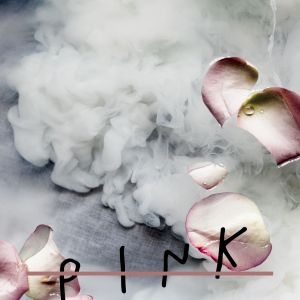GEA - Pink

GEA is the moniker Finnish musical artist Laura Avonius has used to debut the unique sound on her first EP, Pink. This experimental indie pop sound is attributed in a large part, GEA says, to her collaboration with producer and recording artist Miko H. Haapoja. Haapoja is considered one of the most prolific musicians in Finland, and is sought after as a collaborator by artists all over Europe. Upon first listen to Pink and GEA’s extraordinary voice, it’s clear why Haapoja chose to work with her.
The opener to Pink, “Followers” instantly exemplifies the style and concept that GEA and Haapoja were going for on the album. The experimental nature of GEA’s sound is softened by the use of many types of traditional Finnish folk instruments. “Followers” begins with traditional-sounding bells, but they are almost immediately followed by a highly syncopated digital beat. Backing up these two elements is an accompaniment of strings, which also sound traditional if not classical. Rather than being background elements to ground GEA’s vocals once they come in, the arrangement of “Followers” seems to treat all parts equally, with the bells, strings and vocals circulating through the meter of the track in a sort of a round. While GEA’s wispy soprano could easily be the main focus, it’s this style of composition which identifies this album as a true collaboration between GEA and Haapoja, and what makes this debut so unique.
Pink’s title track is also its first single, with a video having been released in October on Youtube. This track features GEA’s vocals much more as a main element than in “Followers,” though the arrangement of the piece is once again extraordinary. Here a subtle yet staccato piano is the main accompaniment to GEA’s voice. The piano is responsible for keeping the beat, as there is no other percussion. The other accompaniment, also quite mutes, is the compressed air harmoni (or harmonium), which creates the string sounds. The harmonium is a type or smaller pipe organ known throughout Europe, but it seems to have a particularly strong presence in Finland. “I think at one point every single elementary school had one in every classroom. When it was added to the song, many of my friends reacted negatively because the sound of it brings nasty flashbacks about their elementary school teacher or funeral,” GEA told Brutal Resonance.
GEA’s vocals in “Pink” are also subtle and muted, even when she reaches impossibly high notes in the chorus. Since her voice is seemingly so quiet, one would expect her voice to waver on these high registers, but it is lilting, angelic and pitch-perfect. Now might be a good time to note that GEA is classically trained, having attended a music conservatoire in Finland beginning from the age of six. The modern, ethereal and minimalist twist that she puts on her classical and traditional background is very evident in this piece.
Pink is quite long for an EP with seven tracks, but that includes two demos. The second such demo and the EP’s closer, “The Real You and Me” is much less polished, as one might expect of a demo. It might simply be a jam session. Here listeners, or reviewers at least, can hear the recording process as GEA is putting her songs together. Once it’s actually arranged and screwed together through production, it will likely sound different. The sound, however, also seems much more traditional and folkish, earthy and fun than some of the other tracks on the album. This is achieved by way of a more earthy, uninhibed vocal sound from GEA as well as another traditional Finnish instrument, the kantele. The kantele is a plucked instrument of the zither family. Despite the intentionally folksy sounds of this track, it’s clearly not finished and it is thus an interesting choice for GEA to include these demos as part of the EP for critics to listen to, but they again show her process which is a nice touch. They will likely be finished tracks once the album releases fully in April.
Fans of Bjork, Sigur Ros or Sia are likely to enjoy GEA’s folkish and experimental take on indie pop. Her airy, emphemeral vocals paired with subtle electronic beats and classical elements create a confluence of all the best elements of each of these styles. Add Haapoja’s brilliant arrangements and production, and this album truly shines. Pink will release on April 25.
Feb 27 2017
Off label
Official release released by the artist themselves without the backing of a label.
Share this review
Facebook
Twitter
Google+
Shares
Buy this release
GEA Soundcloud
Mg (martin Gore) - Mg is available at POPONAUT from 15,95€
Related articles
Jim Semonik
Interview, Jan 26 2010
Carved Souls - 'Waveform'
Review, May 08 2012
ZCluster
Interview, Aug 08 2022
Femmepop
Interview, Feb 17 2016




